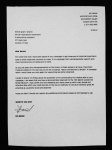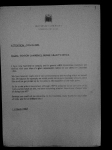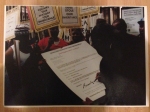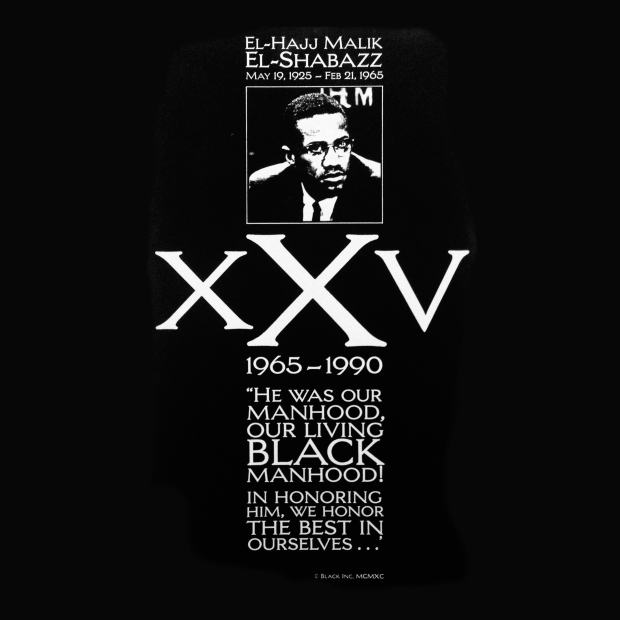This month we find ourselves back in the Caribbean on the region’s fifth largest island, Trinidad or “The Rainbow Island” as it sometimes known due to its wide range of ethnicity, religion and culture. I’m proud to say that I have close family living here, most notably the relations of Karl Hudson-Phillips ORTT, QC, who was one of the island’s most celebrated figures, serving as a Queen’s Counsel, former Attorney-General and Judge of the International Criminal Court in a career spanning over 55 years. Our profiled designer, although still relatively young, is carving out an extremely distinguished career already, which has seen him, his business partners and their company, Abovegroup establish an enviable reputation for creative excellence, innovation and entrepreneurship in the business of branding, design and communications. A beacon for the emerging creativity that is coming out of the Caribbean, it is my absolute pleasure to be able to shine a light today on Gareth Jenkins.

Gareth Jenkins, designer and managing partner Abovegroup
What’s your background?
I am an Anglo-Trinidadian with a quintessentially Welsh name. My mother was born in Trinidad & Tobago, my father in England – both coming from diverse backgrounds themselves. They met at university in Wales before moving back to Trinidad – I think they thought it would be a bit more welcoming to mixed race children than the UK was in the 70s and 80s! So I spent most of my childhood in Trinidad, though I don’t particularly identify with any one culture or place to be honest – I feel like I belong everywhere and nowhere at the same time. Education-wise, I was a science and maths student at school in Trinidad (I was academically inclined, and as such wasn’t allowed to do subjects like art or design, which were considered the domain of those who weren’t going to amount to much) and then went on to study politics in the UK. That was followed by a decade of living and working in London, mainly in the financial sector, until one day I woke up.

How did you get started in your field of expertise?
I was working at JP Morgan at the time (1998) and was fairly settled into a self-satisfied, vacuous kind of existence. One lunch break, I decided to take a rest from the usual fare, walked across the bridge and randomly into the Hayward Gallery. Japanese artist Tatsuo Miyajima happened to be exhibiting at the time. I stood there, absolutely transfixed. Here were these familiar, functional objects – alarm clock-type red LCDs, attached to small motorised cars, zooming around the floor. It was enchanting. Now this may seem pedestrian to someone with a background in the arts, but to me at the time it was explosive – the notion that an object so utterly mundane could be transformed into something so beautiful, so layered, by adding nothing more than an idea. After that nothing ever looked quite the same. Within a month I had quit my job and moved first to Los Angeles and then to Barbados where I began to experiment with graphic design. A good friend convinced me to move back to London where I began working in magazines in the late ’90s, before finally returning to Trinidad and starting my own design studio in 2001. In 2006 I joined forces with photographer Alex Smailes as the practice became more and more focused on what was now my core area of interest: the world of identity.

What challenges did you face in getting into the industry and achieving your ambitions?
Trinidad is blessed with a bounty of natural resources, which makes it quite wealthy by Caribbean standards. It’s a very entrepreneurial environment – at times it seems like everyone is on some hustle or another! It’s also one of those rare places where if you have an idea, and you know how to execute it, you’ve got a better chance of succeeding than not. That makes it a very creative place, certainly in what people do, but perhaps less so in the way they go about doing it. So we have some brilliant examples of creatives who have done well globally – writers, designers, musicians, artists, architects, film-makers and so on; but no real structure or systems in place which allow these successes to be built upon. It’s exciting, chaotic, and ultimately frustrating. It feels as if each generation has to start from scratch, tearing down the half-finished edifices of the previous one, only to eventually get bogged down in the Technicolor mess themselves. As you might imagine, our consultancy isn’t really a part of that culture. Our main challenge was, and still remains, educating clients. Often I first have to sell the importance of design, then the idea of branding and identity, before finally getting around to suggesting that working with me might be a good idea. When I first moved back, there weren’t many people around who were interested in design as a stand-alone profession, other than how it could be used in advertising. That’s not to say that there aren’t good designers in Trinidad & Tobago – far from it. You see, we have this carnival that is amazing – and all absorbing. It’s the tree that hides the forest. So it felt like most of the really talented people were being sucked either into advertising booze, or designing costumes in which to drink said booze. Unfortunately with it came a pallor of mediocrity. This created a paradox – if you knew what you were doing it was easy enough to get started and win new work, but once the business grew beyond a particular point, it was impossible to find anyone to hire. We couldn’t pay what the advertising agencies were offering. And the agencies, flush on decades of huge accounts and sharing clients among the old boys’ network, weren’t letting us in. We turned to our culture instead. We created this beautiful studio in a warehouse in East Port of Spain within what was then CCA, an international artists’ residency programme. Within a few months we had doubled in size, and then again a year later. I started a series of talks called Show & Tell (of course!) – as a way to get our team exposed to new ideas. When 100 people turned up to the first one I figured we were on to something. We would pack up our studio, deck out the warehouse, invite a mix of seemingly unrelated speakers, give them 15 minutes each, and then throw a huge afterparty. Watching diverse audiences interact – young artists mixing – and getting on with – beekeepers , cocoa farmers and curious onlookers was really special. We blended local and international – people like photographer Martin Parr and DJ Diplo gave talks along with a growing crew of talented locals, including Keshav “Jus Now” Singh (musician), Laura Ferriera (photographer), Robert Young (fashion designer) and Wendel McShine (artist). It was fun, fulfilling and ultimately successful in carving out our own space. I think the greatest challenge was our two-and-a-half year partnership with the regional Ogilvy office, from 2011-2013 (Abovegroup Ogilvy). Their challenge was creativity and culture; ours was access to the big multinational clients and steady cashflow (branding is a fickle beast, especially in the Caribbean). So we merged – a design studio with an advertising agency. People said it couldn’t be done, but why not? At first we were so enthusiastic – anything was possible, and indeed it was. But slowly but surely people returned to their old ways. I learnt the hard way that saying that you want change is easy (who doesn’t like new! shiny!); but actually changing the way people see themselves and their business proved impossible. Until then, I don’t think I had ever truly failed at something. Our best people began to drift away, disenchanted. Eventually we too had to give up – we picked up our stuff and walked out, taking our company and reputation with us. We are back on track now and I think our greatest challenge at the moment is staying small. The pressure to grow is always there, but for now, our plan is to keep focused on working with only a few clients at a time, trying to make things that make a difference.

Who and/or what are your greatest inspirations and influences?
I’m largely self-taught, so knowledge of the greats came late in life to me. From a distance – Otl Aicher, Piet Mondrian, Michael Bierut, Peter Zumthor. I’ve always been inspired by the blend of strategy and design that Wolff Olins have mastered. Or the peculiar model of Pentagram. Closer to home, Jamaican magazine First was brilliant; locally Steve Ouditt, Eddie Bowen and Illya Furlong-Walker brought their own brand of genius to the generation before me. Architect Mark Raymond was a great guide and mentor at the beginning. Last but not least my business partners Alex Smailes and Marlon Darbeau and my family have been an endless source of ideas and strength.

What is your best piece of work or the project you are most proud of?
I don’t think there’s any one project, but I’m proud of a few for different reasons. Rebranding Atlantic LNG (the biggest company in the region by revenue) was a real milestone in that it was the first time that a local agency was selected to work on something of that scale. Convincing a sceptical board – the heads of BP Trinidad and Tobago, British Gas and so on – that our solution was the right one – was the hardest, and most satisfying part for me. The Trinidad & Tobago Film Festival was a big success, done quickly, and has so far stood the test of time. Beacon Insurance was interesting in that in working with them on their branding, we began to unearth other aspects of their business that needed to change as well. It stalled the project for ages, but in the end something really meaningful emerged. To be honest though, I think the thing that I’m most proud of is how successful the people who have passed through Abovegroup have become. I’m not trying to steal the credit for that – they were well on their way before we met – but it’s rewarding to think that, in some way, we have helped shape the way they see the world by providing a kind of sanctuary for people with big ideas.

What would be your dream job or project?
I’ve been thinking about this a lot, and it’s to set up a Department of Design in Trinidad & Tobago, working across ministries to bring clarity in communications to what government does and how it goes about doing it. That would include all aspects of internal and external interfaces, workflows and digital; to things like signage, passports, currency and so on. Pie in the sky, right? Maybe not. You see I have this belief that us up-and-coming nations don’t need to wait until we have “arrived” to begin to focus on expressing ourselves clearly. We don’t need the GDP of Norway to appreciate how much better a beautifully designed passport is, or an easy interface to renewing a drivers’ permit. We don’t need a long history of type design to benefit from a unified system of road signage or an intuitive website. We can appreciate what we have without dampening our ambitions – our significant places and monuments aren’t properly identified, their stories buried or misunderstood. It’s no wonder that they are routinely torn down or paved over. I think sophistication in design doesn’t have to be merely an indicator of a nation’s success; it can be a driver towards that success as well. It works for emerging products, brands and corporations – why not nations?

Who in your field do you think deserves credit or recognition?
Ossie Glean Chase is an absolute gem of a man who has had a phenomenal career. He’s a fantastic designer, artist, architect and social thinker. He’s quite well known in certain circles, but barely known in Trinidad, certainly among the younger design community. I have been lucky to meet with him on a few occasions and I always leave feeling that I’ve been speaking with someone much younger than me (he’s in his 80s).

What’s your best piece of advice for those wanting to follow in your footsteps?
The other day the head of one of our associate companies remarked that the problem with us was that we were dreamers, and that Trinidad didn’t like dreamers. If you hear that, you know that you are on the right track. Emerging nations need dreamers. Our problems can’t be solely solved by parroting what has happened in Singapore or in Switzerland. We need to have the self-belief to find appropriate solutions ourselves. As designers we have a responsibility to participate in this development. Design is not a natural priority – we have to push ourselves to the front, and insist that our way of thinking should be included in the process.

What’s next for you?
We recently launched HOME, the region’s first multi-purpose co-working space, in partnership with fashion designer Anya Ayoung-Chee in this beautiful house in Port of Spain. We’re looking to begin replicating this model in other regional cities later on in 2015. I’ve got a personal photography project that I’ve just started, recording the massive cultural shift that Trinidad and Tobago has seen by retaking a series of photographs my father took of beautiful colonial-era buildings in the 1980s. On top of that I’m shifting my centre of gravity back towards the UK at the end of 2015 to be closer to my family and explore new avenues. It’s an exciting time…
For more information visit http://abovegroup.com
Network
EUROPE:
THE V&A PRESENTS ART AND EXISTENCE: AFRICAN AND ASIAN DIASPORA EXPLORED. An informal series of talks led by external practitioners and specialists in their field, who through art, design, media and technology, unpack the cultural and social landscape, exploring race and representation, often provocative, sometime challenging assumptions and perceptions of Africans and Asians and their Diaspora. All six talks are free, booking essential. The first two talks in January are as follows:
Recent Developments in Contemporary Art in Barbados Thursday 8 January, 14.00 – 15.30pm. By Dr Allison Thompson, Lecturer in Art History at Barbados Community College
4 CORNERS: Designers from the African Diaspora (Africa, Caribbean, Europe & USA) Thursday 22 January, 14.30 – 16.00pm Jon Daniel, Independent Creative Director
For booking information visit the V&A website
THE CARIBBEAN:
TVE (TRANSOCEANIC VISUAL EXCHANGE) is making an open call in search of recent artists’ films and videos to be included in an exchange between Fresh Milk (Barbados), RM, (Auckland) and VAN Lagos (Nigeria). Submitted works must have been completed in the last five years and must be made by artists practicing in the Caribbean, Africa or Polynesia. Subission deadline 16 February 2015. For more information visit the Arc magazinewebsite
THE US:
BEYOND THE SUPERSQUARE explores the indelible influence of Latin American and Caribbean Modernist architecture on contemporary art. The exhibition features more than 30 artists and more than 60 artworks, including photography, video, sculpture, installation, and drawing, that respond to major Modernist architectural projects constructed in Latin America and the Caribbean from the 1920s through the 1960s. Runs until 11 January 2015 at The Bronx Museum of the Arts, 1040 Grand Concourse, Bronx, New York 10456 T: 718-681-6000. For more information visit the Bronx Museum website.
AFRICA:
UNCERTAIN TERMS is a group exhibition showcasing the work of 14 artists from across four continents. The exhibition brings together a group of artists who engage with changing dynamics, either in response to formal issues of materiality within their practice, or as a reaction to broader socio-political themes. In all cases the work is a reaction to dominant hegemonic structures. Whether it be through the direct questioning of western depictions of history, colonialism –and its attendant capitalist enterprises, as in the work of artist Frowhawk Two Feathers, or as in Nico Krijno’s work: which destabilizes the primacy of certain modes of production and the objects through which they manifest. Runs until 24 January 2015. For more information visit the What If The World website
If you have any forthcoming events that you would like to be considered for inclusion in this column, please do not hesitate to contact me by email at info at jon-daniel dot com.



















































 Source: Emory Douglas
Source: Emory Douglas Source: Emory Douglas
Source: Emory Douglas Source: Emory Douglas
Source: Emory Douglas Source: Emory Douglas
Source: Emory Douglas Source: Emory Douglas
Source: Emory Douglas Source: Emory Douglas
Source: Emory Douglas Source: Emory Douglas
Source: Emory Douglas Source: Emory Douglas
Source: Emory Douglas




